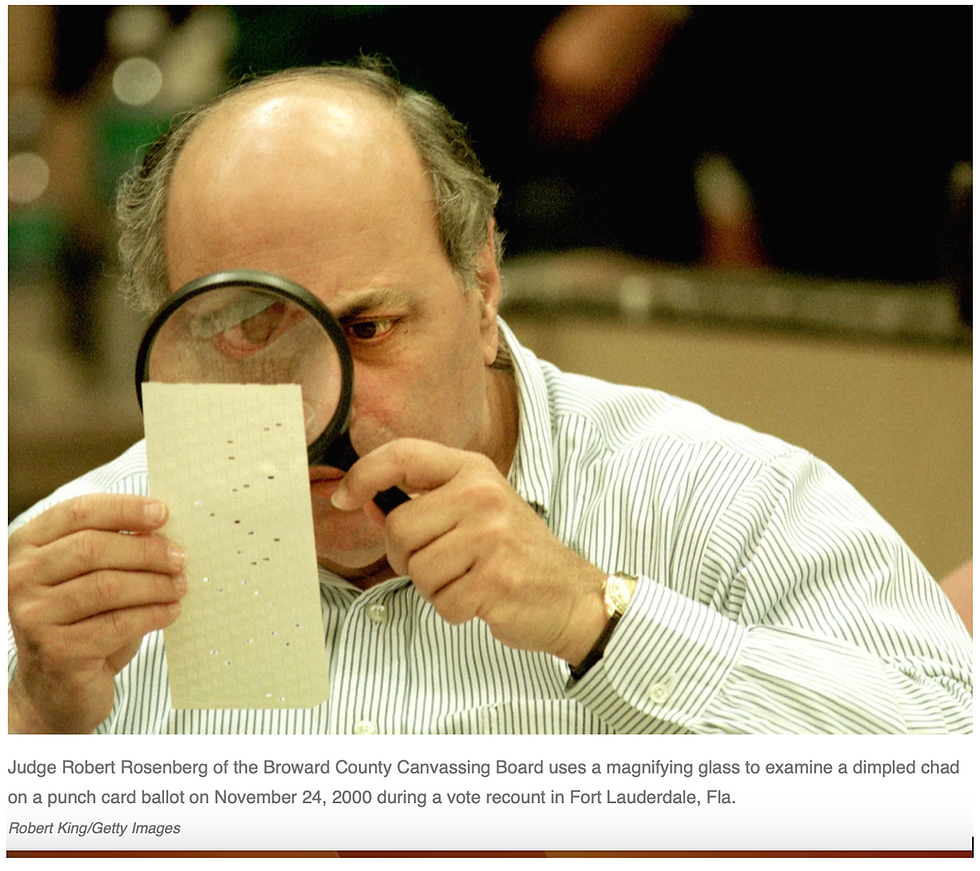What’s this Fuss about the QVF?
- Jul 25, 2023
- 3 min read

By Elizabeth Ayoub, MFE Director of Communications
Since the 2020 election, chances are you’ve heard the initials QVF when discussing that Secretary of State Jocelyn Benson has more registrants on the voter rolls than the state has citizen voting aged residents, and she’s being sued for this.[1] Sign up to help with elections, and you’ll hear QVF spoken during a training class and as you work in a polling location. Attend a political party meeting or a legislative committee hearing, and you’re bound to hear those mysterious three letters.
As with other Q acronyms, like QC for quality control or QR for quick response code, QVF now garners plenty of attention. So, what is the QVF?
The Qualified Voter File is Michigan’s one, single, uniform, official, centralized, interactive computerized voter registration list. Most noteworthy, the QVF has no plural. It is singular because there is but one official QVF at any moment in time. For this reason, understanding the QVF is vitally important for the people of Michigan.
Prior to around 2002, individual clerks kept records of all voters in a particular county, township, village, or city. A local resident, in order to register to vote or apply for an absentee ballot, would go to the clerk’s office. There, one also learned where to vote on election day or where and how to return an absentee ballot.
Individual clerks guarded these sacrosanct records. Each they year attended clerk conferences to learn about new laws, rules, and policies for maintaining accurate voter rolls and to ensure fair and accurate elections. Clerks were proud of the job they did in maintaining these records. There was no QVF back then. Instead, individual clerks kept their local voting records under lock and key.

You are invited to join us each Thursday for a Zoom at Noon. Local, state, and national leaders share the latest information. Take action.
This process all changed after the 2000 presidential race between George W. Bush and Al Gore. A few hanging chads on punch-card ballots in Broward County, Florida, provided print and broadcast news reporters with hours of fodder. Eventually, the halls of the United States Supreme Court rang with briefs and arguments. In the end, high court issued one of its most politically consequential decisions. (See The Florida Recount Of 2000: A Nightmare That Goes On Haunting.)
To this day, constitutional law students study Bush v Gore. But one of the most far-reaching effects of the case took root in the U.S. Congress. In 2002 both the House and Senate passed the Help America Vote Act, and President George W. Bush signed HAVA into law.
According to the U.S. Election Assistance Commission,[2] HAVA was passed to make “sweeping” reform to the nation’s voting process.
Sweep it did.
HAVA mandated that states maintain one computerized statewide voter registration list. It determined that each state’s chief election official implement and maintain one, single, uniform, official, centralized, interactive computerized voter registration list. Michigan’s chief election official is the secretary of state, a position currently held by Jocelyn Benson (D).
With the advent of HAVA, clerks lost control of the sacrosanct, pure, practically undefiled voting records that they had meticulously kept in their jurisdictions for years.
The loss of control at the township and municipal clerk level, combined with the vastly increased powers of the states’ chief election officers, unleashed a cascade of effects.
This is article is one of a series that explores the QVF and the sweeping reforms affecting it. These reforms have come to mean, at a bare minimum, the emergence of inaccurate voting rolls, an example of which is right in Lansing’s backyard.
[1]Rep. Bollin: Lawsuit moving forward highlights need to update state voter rolls (gophouse.org)
[2]https://www.google.com/url?sa=t&rct=j&q=&esrc=s&source=web&cd=&cad=rja&uact=8&ved=2ahUKEwiHo-76oo6AAxUoBTQIHTNEC0QQFnoECBMQAQ&url=https%3A%2F%2Fwww.eac.gov%2Fabout%2Fhelp_america_vote_act.aspx&usg=AOvVaw0QfjiwhcUYxvT2p3s0oMV7&opi=89978449 orTitle 52, Chapter 209, §21083
















Comments